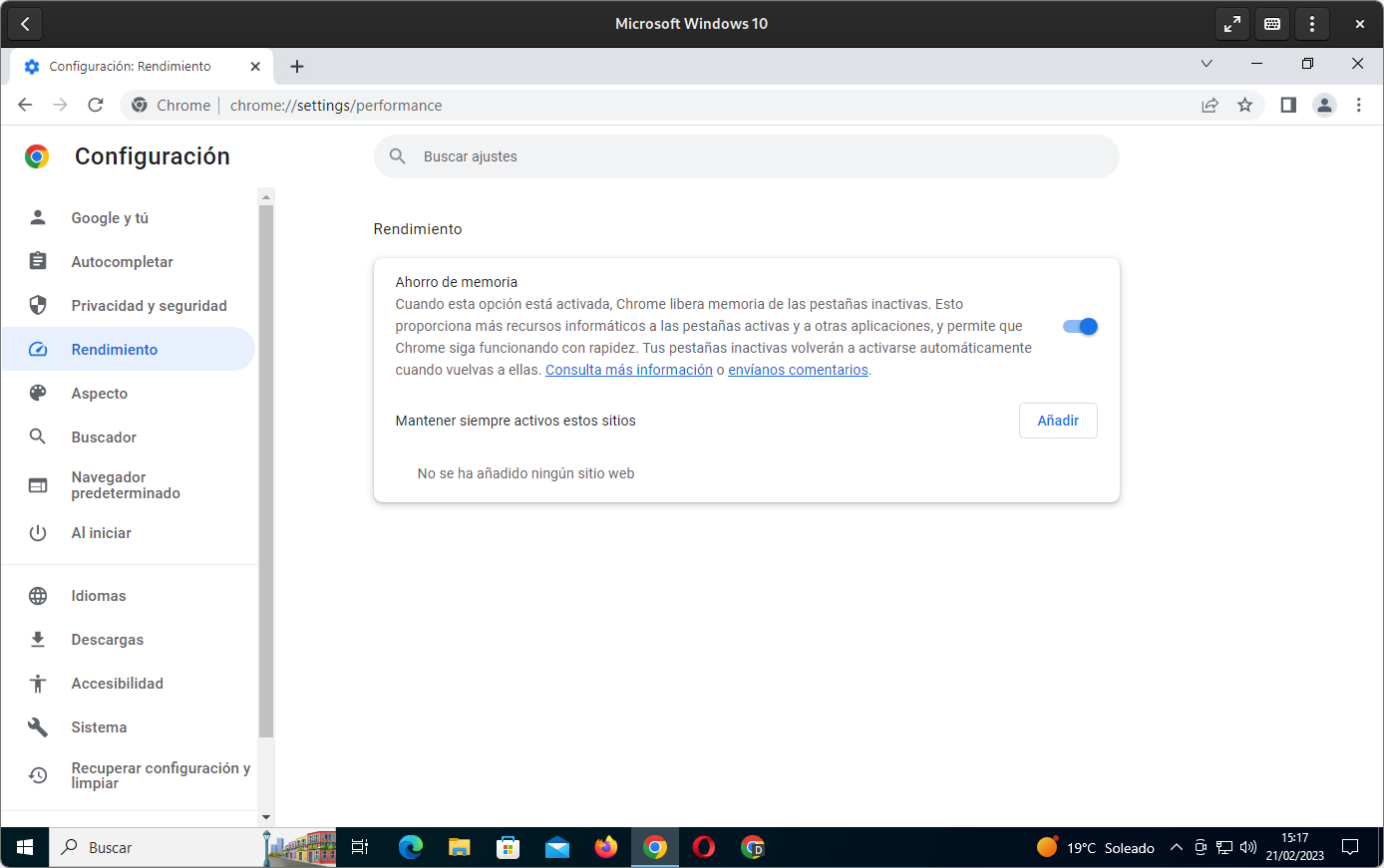Google Chrome Many accuse it of being about resources, which manifests itself in two things: a greater consumption of resources, which can end up being more pronounced on computers that are somewhat limited, and a reduction in the autonomy offered by the laptop’s battery. To improve on both fronts, the search engine giant introduced two new modes in version 110 of the browser, which can be found in the settings under the Performance section: Memory Saving and Power Saving.
Announced in December, the Memory Saver and Power Saver features have made their way to Google Chrome builds for Windows, macOS, and Chromebooks (ChromeOS). Both are enabled by default and in combination are intended to make more efficient use of the resources available on your computer.
regime memory storage, according to its own description, “frees memory from inactive cards. This gives active tabs and other apps more computing resources and Chrome runs fast. Your inactive cards are automatically reactivated when you return to them.
Memory saver basically takes resources from inactive cards to focus them on active ones. Google says it has achieved a saving up to 30% memory usage with this feature, so browser performance should improve on those PCs that don’t have much memory left, and it should also contribute to lower power consumption on laptops.

On the other hand, Energy saving is available on Windows, Mac and Chromebook laptops and is dedicated to limit background activity, frame rate and animated effects when battery level is below 20%. The feature can be configured to run when the charger is unplugged, and when active, will display an icon next to the address bar and reduce visual effects on the active tab.
As we can see, Google is trying to make Chrome a somewhat more efficient application both in the use of resources and energy, which are two things that are related, because the higher the consumption of resources, the less autonomy the laptop offers. We’ll see what results both features offer when the push to shove comes, but whatever happens, there’s no sign that Chrome will lose its crown as the world’s most used web browser, by a wide margin.














